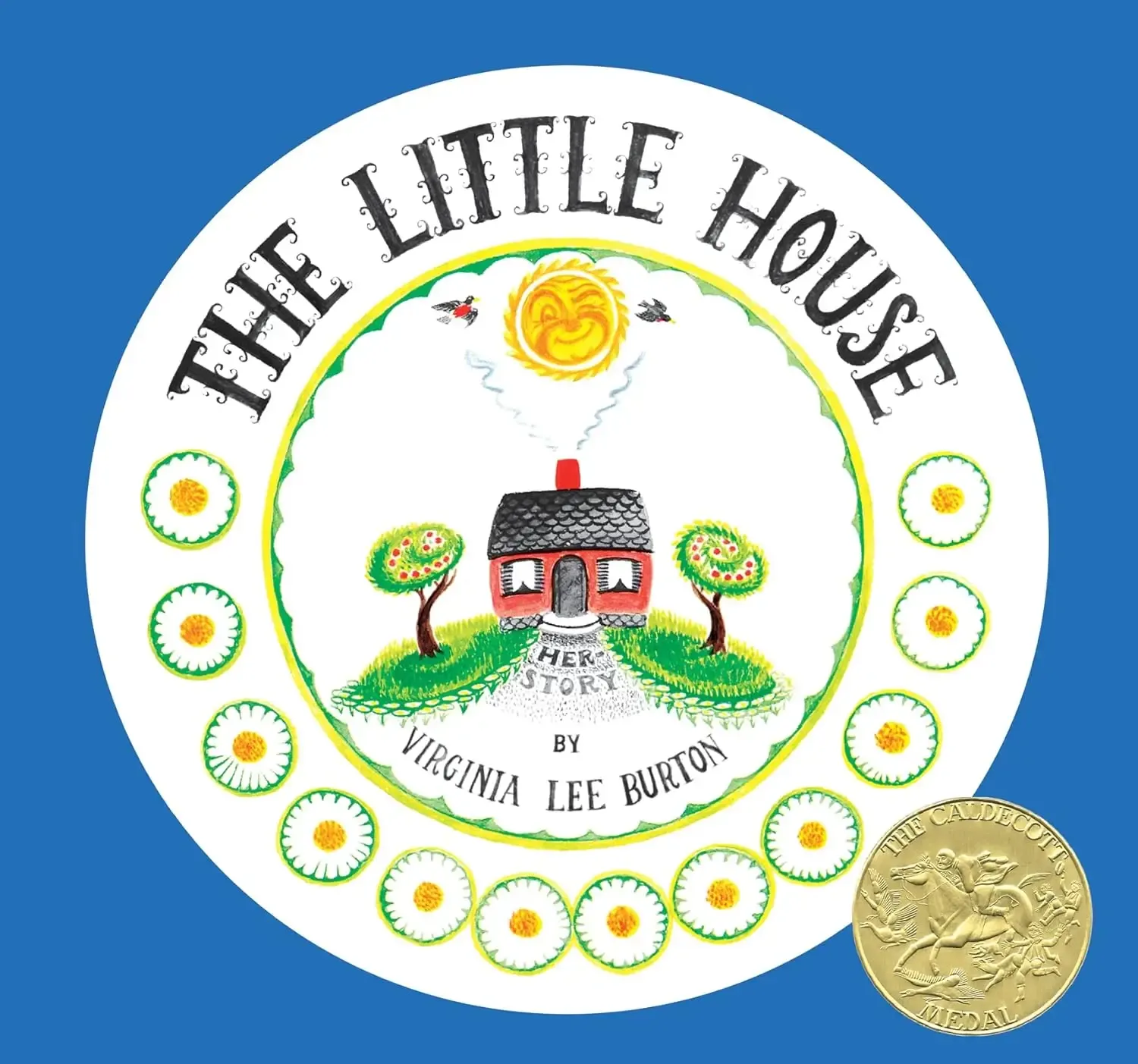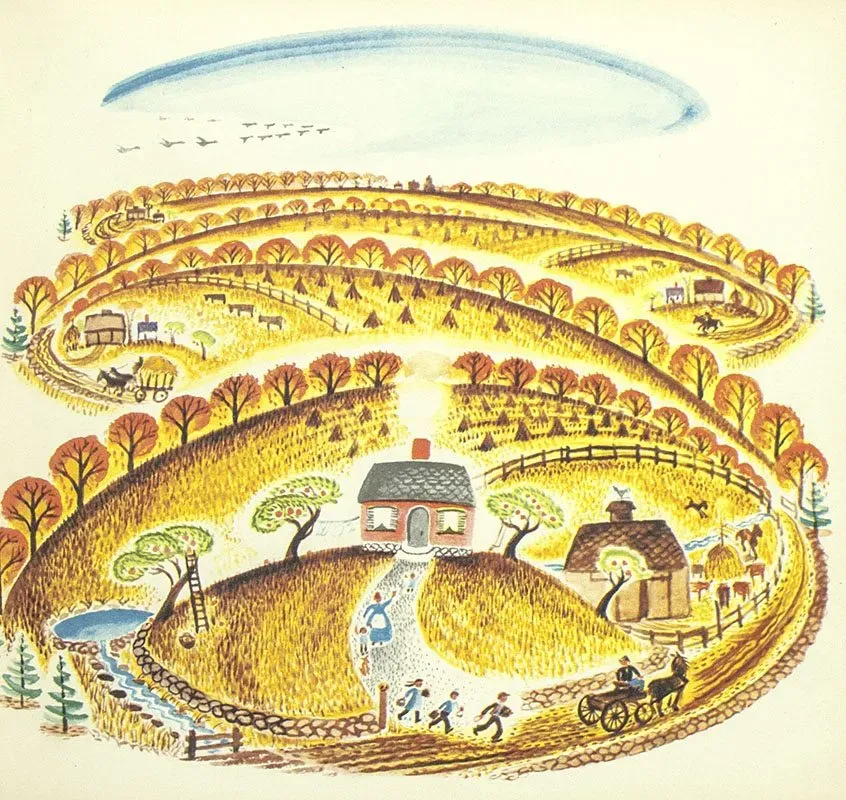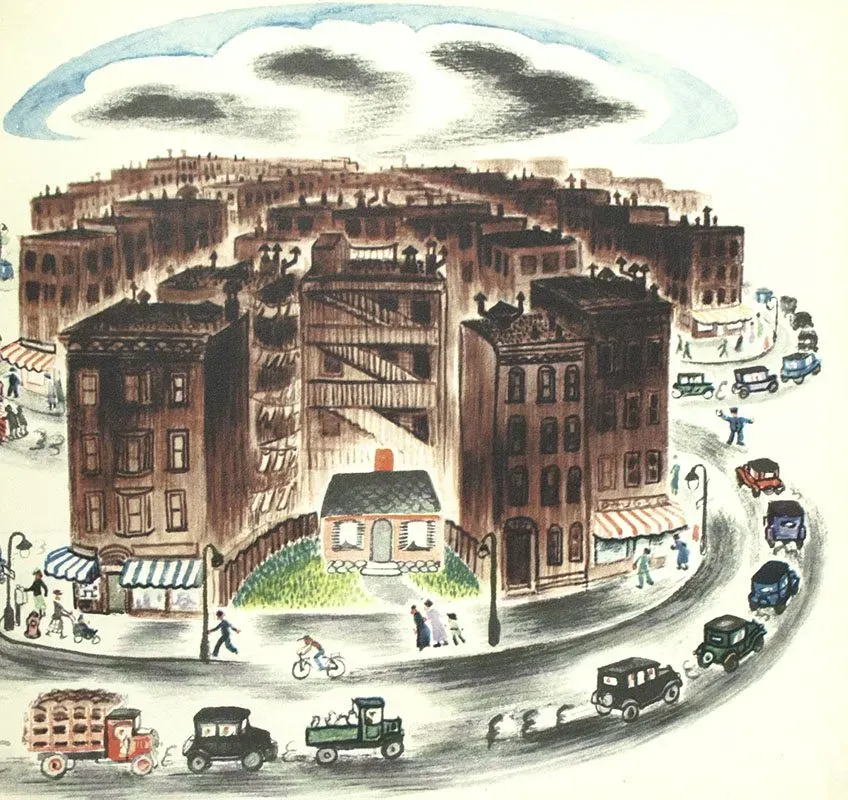Virginia Lee Burton’s The Little House is a timeless and beautifully illustrated picture book that tells the story of a simple country house and its journey through time, as the world around it changes. The book, published in 1942, reflects on the impact of progress and urbanization while celebrating the endurance of home and nature. Through its gentle narrative and captivating illustrations, The Little House remains a beloved classic that speaks to both children and adults about the passage of time, the value of simplicity, and the importance of holding on to what matters most.
At the heart of the story is a small, unassuming house built in the countryside. The house, almost human-like in her quiet contentment, watches the seasons change and enjoys the peaceful life of the countryside. Burton imbues the house with feelings, showing her delight in the stars, the seasons, and the steady rhythm of rural life. However, as the years pass, the once-quiet landscape transforms. Roads are built, the city encroaches, and soon the house is surrounded by the hustle and bustle of modern urban life. Through this transformation, the house feels lonely and out of place in the noisy, crowded city.
Burton’s illustrations are central to the story’s appeal. Using a soft yet detailed style, she depicts the changing landscape with a balance of charm and realism. The vibrant, sweeping drawings provide a visual timeline of the world around the house, from peaceful rolling hills and quiet fields to the rapid growth of cities filled with towering skyscrapers, busy highways, and smoke-filled air. Each page offers a rich, layered view of progress as the quiet countryside is gradually overtaken by industrial development. Burton’s attention to detail invites readers to explore the evolution of the surroundings, making the shift from rural to urban life both visually captivating and thought-provoking.
One of the most poignant aspects of The Little House is its subtle exploration of the effects of urbanization and modernization. As the city grows, the little house becomes overshadowed, neglected, and forgotten. Burton doesn’t vilify progress, but she does ask readers to consider its consequences, especially when it comes at the expense of nature and peace. The house, once a cherished home, becomes a symbol of loss, of the simple pleasures of life and of the past. Yet, there is also a sense of hope, as the house is eventually rescued from the city’s overwhelming presence and returned to the countryside, where she can once again watch the stars and the changing seasons.
The cyclical nature of the story, the house beginning in the country, enduring the city, and ultimately returning to a quieter life, underscores a theme of return to one’s roots. The ending, in which the house is moved back to a peaceful hill, serves as a gentle reminder that no matter how much things change, there’s always the possibility of returning to simplicity and tranquility. It’s a comforting notion, especially for readers who may feel overwhelmed by the fast pace of modern life.
Burton’s ability to convey complex themes in such a gentle, accessible way is what makes The Little House stand out. Her prose is simple, yet poetic, making it easy for young readers to follow while allowing adults to appreciate the deeper reflections on change, memory, and home. The house’s quiet dignity, even as she is swallowed up by the city, reminds readers of the enduring strength of home as a place of comfort and stability, no matter what the outside world may bring.
The Little House is a book that resonates across generations, offering both a nostalgic look at the past and a hopeful vision for the future. Virginia Lee Burton’s masterful storytelling and illustrations create a rich narrative about the balance between progress and preservation, and the importance of cherishing the things that truly make a house a home. This is a book that invites readers to pause, reflect, and appreciate the beauty of simplicity and the passage of time.
Questions to ask while reading:
- How does the little house change throughout the story?
- What do you think the house symbolizes in the book?
- Why do you think the house is happiest in the countryside?




